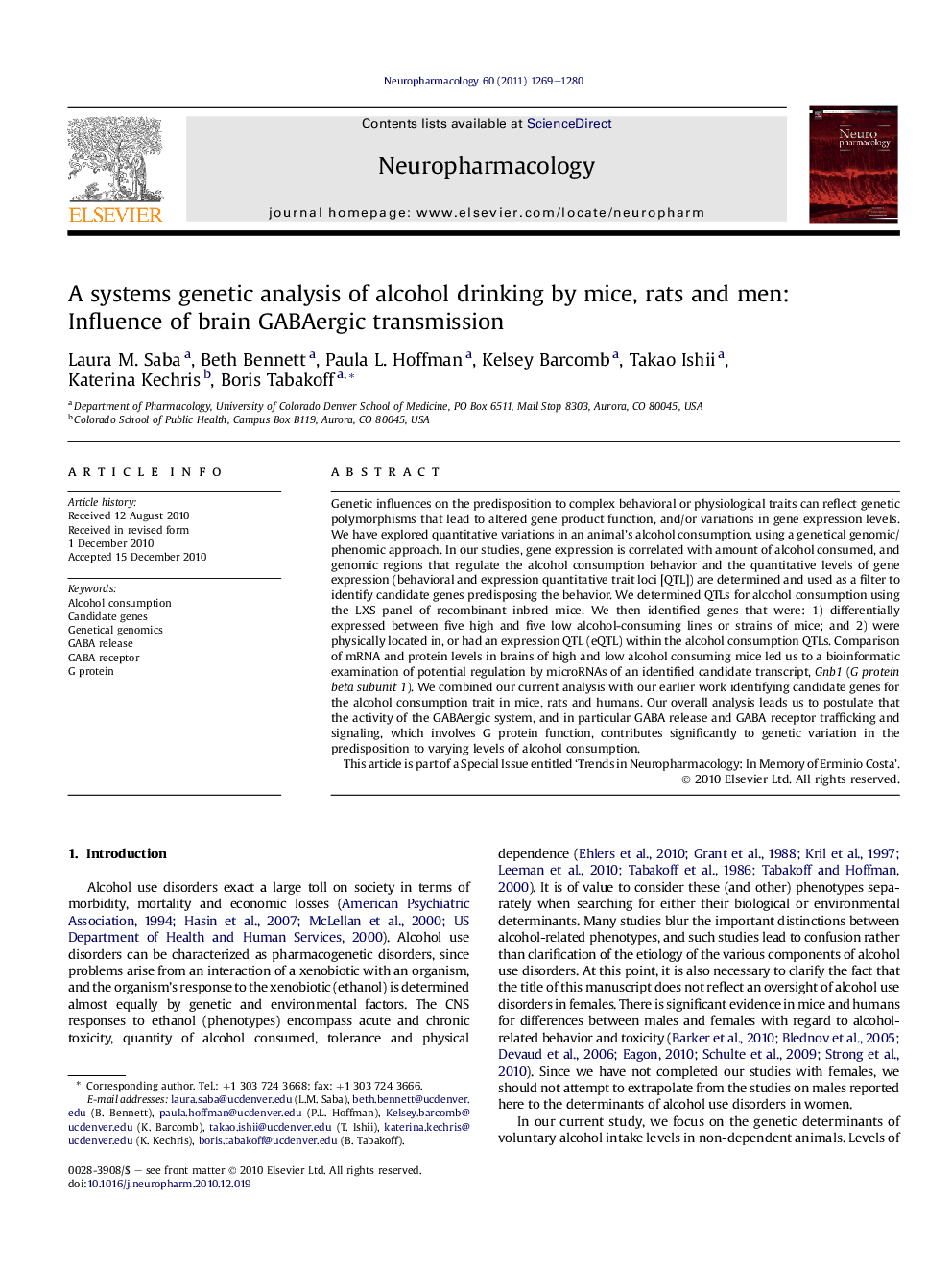| Article ID | Journal | Published Year | Pages | File Type |
|---|---|---|---|---|
| 2493716 | Neuropharmacology | 2011 | 12 Pages |
Genetic influences on the predisposition to complex behavioral or physiological traits can reflect genetic polymorphisms that lead to altered gene product function, and/or variations in gene expression levels. We have explored quantitative variations in an animal’s alcohol consumption, using a genetical genomic/phenomic approach. In our studies, gene expression is correlated with amount of alcohol consumed, and genomic regions that regulate the alcohol consumption behavior and the quantitative levels of gene expression (behavioral and expression quantitative trait loci [QTL]) are determined and used as a filter to identify candidate genes predisposing the behavior. We determined QTLs for alcohol consumption using the LXS panel of recombinant inbred mice. We then identified genes that were: 1) differentially expressed between five high and five low alcohol-consuming lines or strains of mice; and 2) were physically located in, or had an expression QTL (eQTL) within the alcohol consumption QTLs. Comparison of mRNA and protein levels in brains of high and low alcohol consuming mice led us to a bioinformatic examination of potential regulation by microRNAs of an identified candidate transcript, Gnb1 (G protein beta subunit 1). We combined our current analysis with our earlier work identifying candidate genes for the alcohol consumption trait in mice, rats and humans. Our overall analysis leads us to postulate that the activity of the GABAergic system, and in particular GABA release and GABA receptor trafficking and signaling, which involves G protein function, contributes significantly to genetic variation in the predisposition to varying levels of alcohol consumption.This article is part of a Special Issue entitled ‘Trends in Neuropharmacology: In Memory of Erminio Costa’.
► Genetical genomics/phenomics approach reveals candidate genes for alcohol drinking. ► Systems approach shows role of GABA systems in predisposition to consume alcohol. ► Results demonstrate systems that influence alcohol consumption by mice, rats, men.
